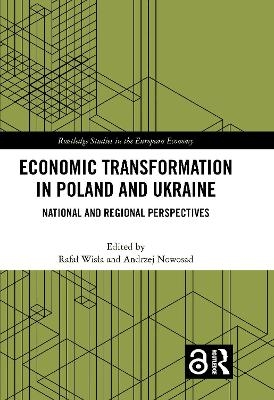
Economic Transformation in Poland and Ukraine
Routledge (Verlag)
978-0-367-48493-4 (ISBN)
When Poland and Ukraine introduced their political, social and economic system reforms at the beginning of the 1990s, both economies were at a similar level of economic development (GDP $9,500 per capita). However, in 2018, Ukrainian GDP per capita had remained at the same levels since 1991, while in Poland, it had increased significantly, to more than $27,000 per capita.
This book assesses the reasons for the growing gap between the level of economic development in Ukraine and Poland. It examines the course of events and evaluates the effectiveness of the system transformations, both in the context of the economy, as a whole, and in individual regions (Polish ‘voivodeships’ (provinces) and Ukrainian ‘oblasts’). It also analyzes the consequences of the 2008–2009 Ukrainian-Russian gas conflict and 2013–2014 Euromaidan events for the Ukrainian economy. Additionally, the authors offer an insight into the migration movements, which have recently been observed in Poland and Ukraine.
This is the first comprehensive, comparative analysis concerning the spatial diversification of economic development in these two countries, and the authors highlight the ways in which these reforms have proved effective in Poland and hardly effective in Ukraine. This analysis helps to identify the basic interrelations between the core macroeconomic variables at the regional level and the impact of political events from both a national and regional perspective.
The book will appeal to academics, researchers and policy makers interested in the economic and political changes in these two countries, in a comparative setting and on national and regional levels, as well as those working on issues of EU integration.
Rafał Wisła is Professor at the Department of Economics and Innovation of the Jagiellonian University, Krakow, Poland. Andrzej Nowosad is Assistant Professor at the Institute of Journalism, Media and Social Communication of the Jagiellonian University, Krakow, Poland.
1. INSTITUTIONAL CONDITIONS FOR THE FUNCTIONING OF THE POLISH AND UKRAINIAN ECONOMIES 2. OWNERSHIP TRANSFORMATIONS IN POLAND AND UKRAINE 3. STRUCTURAL CHANGES IN THE POLISH AND UKRAINIAN ECONOMIES AGAINST THE BACKGROUND OF OTHER CENTRAL AND EASTERN EUROPEAN COUNTRIES 4. THE DEMOGRAPHIC POTENTIAL OF POLISH VOIVODESHIPS AND UKRAINIAN OBLASTS 5. THE ECONOMIC POTENTIAL OF POLISH VOIVODESHIPS AND UKRAINIAN OBLASTS 6. PRODUCT MARKET STRUCTURES 7. DETERMINANTS OF THE SPATIAL DIFFERENTIATION OF LABOR MARKETS IN POLAND AND UKRAINE 8. SIMULATIONS OF VOIVODESHIP AND OBLAST DEVELOPMENT TRAJECTORIES. AN ANALYSIS BASED ON THE GRAVITY GROWTH MODEL 9. THE SPATIAL DIFFERENTIATION OF MIGRATION IN POLAND AND UKRAINE 10. SPATIAL DIFFERENTIATION OF THE OF ECONOMIC DEVELOPMENT OF POLISH VOIVODESHIPS AND UKRAINIAN OBLASTS
| Erscheinungsdatum | 09.10.2020 |
|---|---|
| Reihe/Serie | Routledge Studies in the European Economy |
| Zusatzinfo | 21 Tables, black and white; 83 Line drawings, black and white; 153 Illustrations, black and white |
| Verlagsort | London |
| Sprache | englisch |
| Maße | 156 x 234 mm |
| Gewicht | 557 g |
| Themenwelt | Geschichte ► Teilgebiete der Geschichte ► Wirtschaftsgeschichte |
| Wirtschaft ► Volkswirtschaftslehre ► Makroökonomie | |
| ISBN-10 | 0-367-48493-5 / 0367484935 |
| ISBN-13 | 978-0-367-48493-4 / 9780367484934 |
| Zustand | Neuware |
| Haben Sie eine Frage zum Produkt? |
aus dem Bereich


